Ventilation in a country toilet with a cesspool: step-by-step instructions and recommendations for arrangement
Many citizens love trips to the country for the opportunity to relax from the bustle of the big city and breathe in the fresh air. Unless, of course, poor quality ventilation in the cottage toilet with a cesspool does not spoil it, but there is nothing to be done about it, these are the downsides of a country vacation.
Or is it possible to do without the stinking amber, who settled in a latrine?
We will tell you in detail how to properly arrange the air exchange and enjoy a vacation on a fresh vacation without such small, but still unpleasant nuances.
The content of the article:
The need for ventilation
A country or rural street toilet is usually the easiest building, most often wooden or brick. The place for collecting sewage is a cesspool with or without a tank installed in it.
With the accumulation of human waste, a terrible smell appears - the result of the decomposition of organics with the participation of bacteria in it.
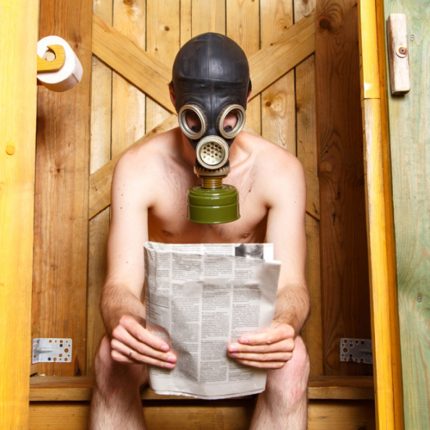
In addition, in such a toilet fatty flies crawl through sewage and spread infection with parasites.
Fortunately, the design of the cesspool, and this is the way most often equip street latrines, allows you to remove accumulated faeces in a timely manner through the opening in the building, and in addition, it is possible to equip functioning ventilation in the building.
Theoretically, it can be included in built toilet, but nevertheless, it is best to foresee it at the design stage of the closet.
We will tell you what types of ventilation for summer cottages exist and you can choose the best option for you.
Natural toilet ventilation
When they say "natural", in most cases they imply the installation of a simple supply and exhaust structure. But in fact, the most relevant thing is to talk about the design features of the structure itself.
With this type of ventilation, if you can call it that, odors are removed naturally, thanks to the standard air circulation in the cabin. To do this, the structure is most often built with gaps - in the lower part between the floor and walls and in the upper - between the walls and the roof.
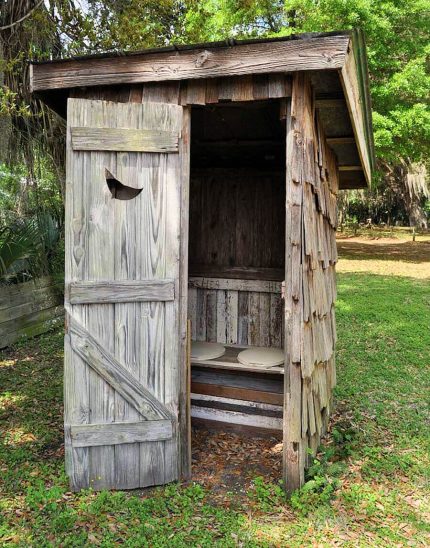
And of course, we must not forget about the window, which, however, should be present in any ventilation scheme. The window is not glazed in any case, with the exception of structures where they are 2-3 and only one of the open ones is left open, covering for the winter with a sheet of plywood, and in the summer with a mosquito net. It serves as a natural source of fresh air and lighting.
In the villages such toilets are found quite often and, most likely, that is precisely why the notorious “stockpile” is found about latrines in such a locality.
Why is such ventilation not effective, although it certainly has advantages in the form of a complete lack of costs?
Favorable conditions for ventilation are not constant, and odor removal is ineffective. In still weather, air exchange is minimized.
Free-standing toilet rake
Some latrines look like home. In them toilet is installedThere are absolutely no natural odors inside. At first glance - perfect. But on the other hand, this design is very complex.
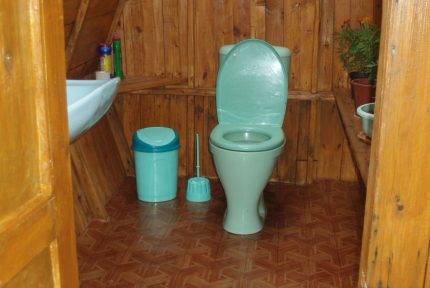
This is a freestanding toilet house located in a distance from it cesspool. From the pros - no need to fight stench and flies, everything is clean and convenient.
Of the minuses:
- the whole structure takes up a lot of space on the site;
- the pit will still smell;
- water supply for flushing is required;
- faster filling, just because of flushing;
- it is necessary to equip the pipeline through which the fecal matter sent to the pit will move.
Due to the large number of minuses and the high cost of equipping such a toilet, we will not consider this option, but move on to a more rational one.
We also recommend reading our other articles, where we examined in detail the most popular projects of country toilets:
Natural ventilation
This method is one of the most popular. This is due to the minimum costs, both labor during the arrangement, and financial in the process of manufacturing and operation.
All the same house, a cesspool under it, a window for natural ventilation. However, several elements are added to the design at once.
Airing occurs on a double basis. The cesspool and the cabin itself are ventilated. The principle is supply and exhaust.
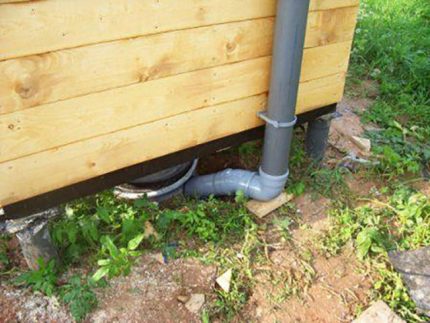
The minus of the design is less efficient ventilation than with a forced system, which we will discuss a bit later.
Pros:
- minimum costs both during construction and during operation;
- lack of need for difficult leaving;
- simple arrangement that does not require skills.
In addition, this type of ventilation can be easily equipped even with a type toilet already in use.
What to prepare for natural ventilation?
First of all, you need to clean the booth so that it is convenient to carry out installation work in it.
Prepare the following tools:
- drill for wooden structures, perforator for brick walls;
- crowns;
- roulette, level;
- pipe cutter scissors for plastic pipes or a hacksaw;
- electrical tape, pliers;
- bayonet shovel.
In principle, every summer resident has such a set, but if you have something missing, ask your neighbor or rent the same power tools at a hardware store that provides such services.
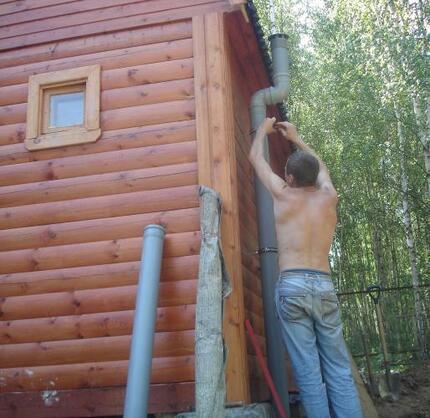
In addition, the necessary consumables should be purchased in advance. They are sold in almost any hardware store. They can also be ordered via the Internet, but in principle, there should not be a problem with their purchase.
Required Materials:
- PVC pipe with a size of 110 mm, the length is determined individually.
- PVC pipe with a diameter of 110 mm.
- Corner element of PVC pipe for pits that do not protrude beyond the booth.
- Fasteners - clamps with dowels, wood or concrete screws for arranging ventilation grilles.
- Ventilation grills - 4 pieces.
- Deflector.
- Protective steel sheath made of steel with an inner diameter of 110 mm. It will help protect pipes from deformation during natural shrinkage of walls.
If everything is ready, it’s time to start the installation.
Installation of natural exhaust ventilation
To begin with, we will arrange the ventilation of the cabin. An exhaust duct should be built. The ideal height for its installation is 15 cm from the ceiling. In general, it should be as close to it as possible, but no closer than 150 mm voiced.
The second channel is supply. It is placed on the opposite wall - to achieve the maximum distance between the hood and the intake, as close as possible to the floor, but with a minimum distance of 15 cm.
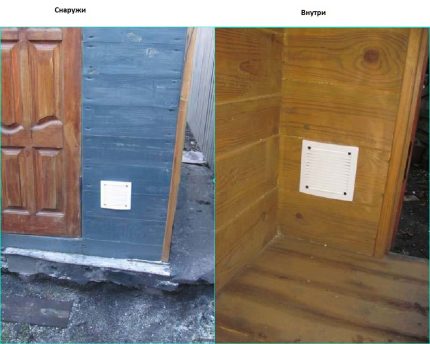
Holes for both channels are made using a drill or hammer, as well as crowns. It is best to pre-outline the location of the holes and their size in the absence of crowns.
Plastic pipes are inserted into the drilled holes, which are cut flush with the walls and polished their edges so that they are not sharp. If the holes turned out to be very large, around the pipes can be foamed with mounting foam or coated with sealant.
The ends of the pipes on both sides - from the cab and from the street, are closed with prepared ventilation grilles. This is necessary so that garbage does not get into them, midges do not fly in and that they do not siphon much.
Thus, we provided an extract in the toilet into duct ducts inside the toilet cubicle. After this, you can begin to equip the cesspool.
The pipe for the cesspool is installed in such a way that one of its ends is as close as possible to the area of the waste container, but is located in its “dry” zone. Calculate the length so that the upper part of the pipe protrudes at least 7 cm above the roof. This will allow you to form a draft of sufficient power so that methane can be removed from the pit without problems.
To equip the pit, you need to dig a hole with a shovel, into which you need to place a ventilation pipe of a calculated length. If the pit is located directly under the booth, use a corner element and then dock it with the vertical section.

Fix the pipe to the external wall of the cabin with clamps to avoid its inclination or falling.
Put a baffle on the head, it is best to take a model with the function of a weather vane, it enhances the speed of the air flow. The main function of the deflector is to prevent debris and precipitation from entering the structure.
This way you get efficient air exchange quickly and inexpensively.
Forced ventilation of a country bathroom
The successful combination of natural draft and auxiliary means make forced ventilation a leader in the quality of toilet amber hoods. In addition, it is not so difficult to equip it. The only negative is that it requires energy, but more about this in more detail.
In addition to the above-mentioned method of supply and exhaust natural circulation, the design includes exhaust fan. Of course, it works on electricity and this means that you have to pull the cable into the toilet (if you do not have it as an element for organizing artificial lighting).
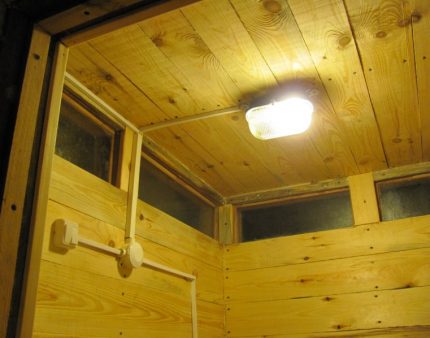
These are electricity costs, however, very small. A fan is also inexpensive, but you will have to spend money on a high-quality cable and its insulation.
Materials and tools for work
The list of materials for forced ventilation is almost the same as the previous version. The only exception is the fan and the wires.
It is necessary to prepare:
- PVC pipe with a size of 110 mm, the length is determined individually.
- PVC pipe with a diameter of 110 mm.
- Corner element of PVC pipe for pits that do not protrude beyond the booth.
- Fasteners - clamps with dowels, wood or concrete screws for arranging ventilation grilles.
- Ventilation grills - 5 pieces.
- Deflector.
- Fan.
- Pipe sheath, with a diameter of 110 mm inside for shrink protection.
- Wiring, switch.
Please note that buying the cheapest fan is not always advisable. Consult the store which device is suitable for use in almost outdoor conditions.
And if you plan to install it in the window frame, but at the same time you no longer have windows in the toilet, it is better to take care of artificial lighting or additional windows.
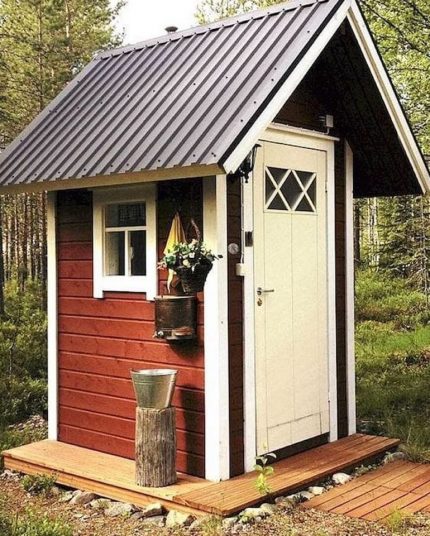
In addition, to work you will need the same set of tools as in the previous version.
Installation of forced ventilation
The installation diagram is also similar, initially ventilating holes are installed by analogy with the previous version, and then proceed to install the fan.
Electrical wiring is usually conducted from the house from the attic.Remember safety - insulation must be of good quality.
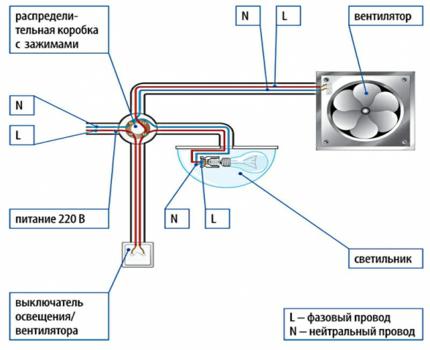
The fan is usually installed in the window, when choosing a device they are guided by the dimensions of the frame. After installation, it must be connected to the switch, put on top of it a ventilation grill.
Other odor control options
We examined everything about arranging a hood in a country toilet and how to properly do it. High-quality mounted ventilation is the key to comfortable use of the closet. Do not forget to clean the ventilation grills in time with warm water and soap, check the draft. And then you no longer have to suffer with a dressing ambra.
But there are other ways to destroy or mask unpleasant odors. We do not recommend abandoning the arrangement of specialized systems, but as an aid, we can offer you several options.
And, by the way, most of them also help to reduce the amount of sewage.
Option 1 - Chemicals
The first option is chemicals. They act very quickly and can be used at any time of the year.
There are drugs:
- nitrate;
- ammonium;
- bleaching powder.
Nitrates are the safest in environmental terms. They contain surfactants, help get rid of odors, and even have some cleansing effect.
Ammonium preparations are also effective, but keep in mind that if you pour soap solutions into a cesspool, you can’t use them.

And, finally, bleach, an extremely toxic substance, but budget in the acquisition.
All these tools fight odors and can be great helpers to your ventilation. However, be careful and follow the instructions for use.
Option 2 - bioactivators for the toilet
More and more actively summer residents use bioactivators - concentrated products containing bacterial strains. They "work" at temperatures from 0 degrees and above.
Bacteria are actively involved in the disposal of sewage, which also contributes to the elimination of odors.
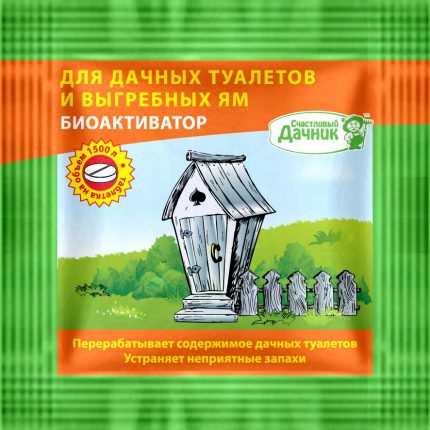
The drug is sold in the form of tablets, liquids or powder.
The disadvantages of use include:
- Non-viability at subzero temperature.
- The death of bacteria in contact with a chemical environment.
- An accurate calculation of the amount of the drug, since if it is deficient, the bacteria will die or simply can not cope with the amount of sewage.
- Slow result - about a week from the start of use.
As well as with chemicals, when using a bioactivator it is very important to clearly follow the instructions on the package.
Option 3 - Peat Fillers
Peat fillers contain pre-growing peat and are mainly used for dry closets, but they can also be used for cesspools.
They actively absorb moisture, negatively affect the formation of insects, quickly and efficiently process waste, and in addition, fight unpleasant odors.

In addition to peat, such means as are also used:
- Sawdust and ash - 1 cup is enough after each trip to the toilet.
- Freshly cut grass.
- Tomato tops and nettles - actively absorb ammonia, causing an unpleasant odor.
By the way, if you do not use detergents and other chemicals, the coffers can then be used to create compost.
Conclusions and useful video on the topic
Arrangement of the simplest ventilation in a country toilet:
So, we examined how to make a quality hood in a street toilet and made sure that everything is not as complicated as it seems at first glance. Almost any host will cope with its installation. You just have to choose the option suitable for you and proceed with installation.
And after that, your closet will certainly not leave an unpleasant impression from the visit to its owners.
Have you equipped yourself with ventilation in your country toilet? What difficulties did you encounter? Share your experiences in the comments and ask questions on the topic.

 Ventilation of the bastu in the bath: advantages and disadvantages + instructions for the arrangement
Ventilation of the bastu in the bath: advantages and disadvantages + instructions for the arrangement 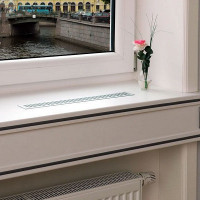 Window sill ventilation: methods and detailed instructions for arranging window sill ventilation
Window sill ventilation: methods and detailed instructions for arranging window sill ventilation 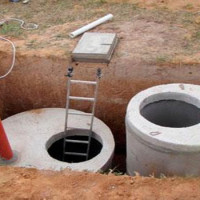 Ventilation of a septic tank in a private house: is it needed + tips for arranging
Ventilation of a septic tank in a private house: is it needed + tips for arranging  Ventilation in the bathroom and toilet: principle of operation, typical schemes and installation features
Ventilation in the bathroom and toilet: principle of operation, typical schemes and installation features  Do-it-yourself ventilation of the cellar in the garage: installation methods and procedures + useful tips for arranging
Do-it-yourself ventilation of the cellar in the garage: installation methods and procedures + useful tips for arranging  How to install a supply valve into the wall with your own hands: step-by-step instructions for the work
How to install a supply valve into the wall with your own hands: step-by-step instructions for the work  How much does it cost to connect gas to a private house: the price of organizing gas supply
How much does it cost to connect gas to a private house: the price of organizing gas supply  The best washing machines with dryer: model rating and customer tips
The best washing machines with dryer: model rating and customer tips  What is the color temperature of light and the nuances of choosing the temperature of the lamps to suit your needs
What is the color temperature of light and the nuances of choosing the temperature of the lamps to suit your needs  Replacement of a geyser in an apartment: replacement paperwork + basic norms and requirements
Replacement of a geyser in an apartment: replacement paperwork + basic norms and requirements